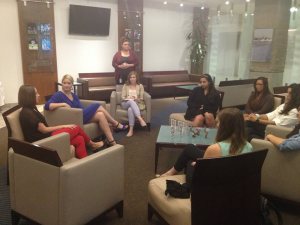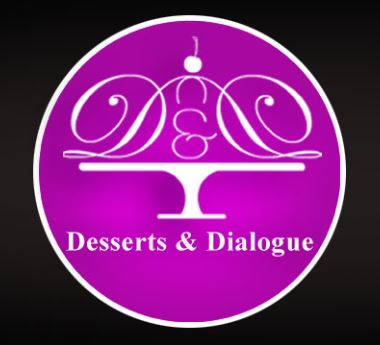This past Wednesday, I attended one of Chapman’s Career Development Center’s Desserts & Dialogue which focused on social media and networking.
 The speakers were Tracy Chambers ’11, TOMs Marketing Coordinator, Jeff Whitlach ’08, Creative Director at Genie Den, and Sheri Lehman ’11, Interactive Marketing Specialist at Chapman University.
The speakers were Tracy Chambers ’11, TOMs Marketing Coordinator, Jeff Whitlach ’08, Creative Director at Genie Den, and Sheri Lehman ’11, Interactive Marketing Specialist at Chapman University.
Tracy spoke about how she primarily began with gifting and then moved up to influencer marketing. She talked a lot about being conscious about how the brand is portrayed. TOMs has a very authentic, humble, and down-to-earth vibe, so they would want to contact stylists and celebrities to represent the brand that share those same values.
Jeff shared about his two social media experiences and his time helping out his family restaurant, Genie Den. In terms of customer service, Jeff stressed that social media is #1. For his family restaurant, Facebook and Yelp have been the most useful. He decided to respond to all of their negative Yelp reviews. Basically, if a brand ignores feedback, consumers will engage with each other and feed the negativity. He also touched on how different networks are great for different brands – for example, Twitter is a great tool for experience-based brands.
Sheri is my supervisor at work so it was fun to hear her talk about her experiences. She touched on what I discussed in my other post about social media for higher education establishments (check it out!). Sheri also gave some really great advice – to start branding yourself on social media as part of your resume/portfolio if this is a field you’re interested in. She’s completely right – that’s why I’ve been working so hard on my blog and Twitter. She said if your social media presence isn’t something you’re proud of, then don’t go into social media. Hard to accept, but very true. She also suggested buying your domain name. It’s good to claim your name on the internet before somebody else does.
Since there were only about 5 other students attending the dialogue, it was a great chance for us to have a discussion and ask questions. Overall, a very great professional opportunity for me and I learned a lot from these three extremely inspiring individuals.




